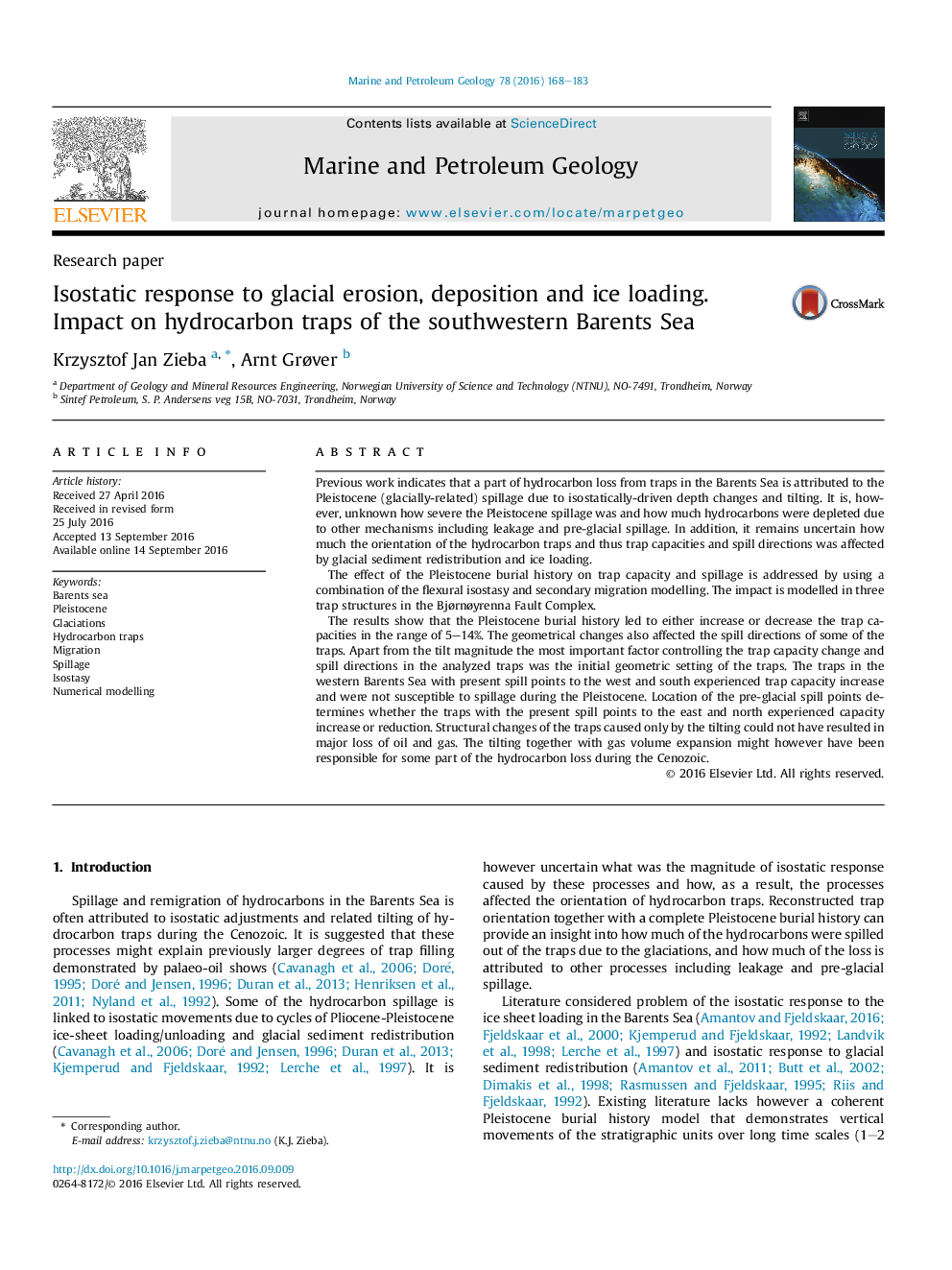| کد مقاله | کد نشریه | سال انتشار | مقاله انگلیسی | نسخه تمام متن |
|---|---|---|---|---|
| 6434378 | 1637149 | 2016 | 16 صفحه PDF | دانلود رایگان |
- The Pleistocene burial history resulted in changes of hydrocarbon trap capacities of the Bjørnøyrenna Fault Complex in the range of 5-14% (positive or negative).
- In addition to tilt magnitude the most important factor controlling the trap capacity change and spill directions was the initial geometry of the traps.
- Structural changes of the traps caused only by the Pleistocene tilting could not have been responsible for any major loss of oil and gas in the study area.
Previous work indicates that a part of hydrocarbon loss from traps in the Barents Sea is attributed to the Pleistocene (glacially-related) spillage due to isostatically-driven depth changes and tilting. It is, however, unknown how severe the Pleistocene spillage was and how much hydrocarbons were depleted due to other mechanisms including leakage and pre-glacial spillage. In addition, it remains uncertain how much the orientation of the hydrocarbon traps and thus trap capacities and spill directions was affected by glacial sediment redistribution and ice loading.The effect of the Pleistocene burial history on trap capacity and spillage is addressed by using a combination of the flexural isostasy and secondary migration modelling. The impact is modelled in three trap structures in the Bjørnøyrenna Fault Complex.The results show that the Pleistocene burial history led to either increase or decrease the trap capacities in the range of 5-14%. The geometrical changes also affected the spill directions of some of the traps. Apart from the tilt magnitude the most important factor controlling the trap capacity change and spill directions in the analyzed traps was the initial geometric setting of the traps. The traps in the western Barents Sea with present spill points to the west and south experienced trap capacity increase and were not susceptible to spillage during the Pleistocene. Location of the pre-glacial spill points determines whether the traps with the present spill points to the east and north experienced capacity increase or reduction. Structural changes of the traps caused only by the tilting could not have resulted in major loss of oil and gas. The tilting together with gas volume expansion might however have been responsible for some part of the hydrocarbon loss during the Cenozoic.
Journal: Marine and Petroleum Geology - Volume 78, December 2016, Pages 168-183
